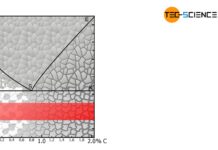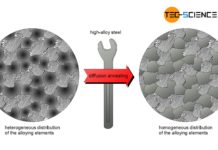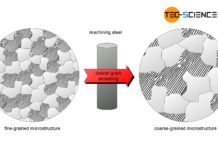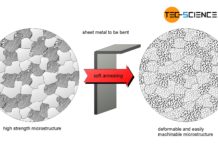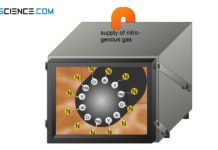The aim of recrystallisation annealing is to restore a deformed microstructure to improve its deformability!
The microstructure of rolled, bent or deep-drawn workpieces is strongly deformed by the high forming forces. This also changes the material properties. In the case of rolled sheets, this can lead to a strong anisotropy through the elongated crystals, also known as rolling texture. In addition, strain hardening takes place in the forming area, which increases the strength and reduces the deformability accordingly. If the workpiece is to be further formed in this condition, the risk of cracking increases. Multi-stage forming processes are therefore not possible without further ado. However, many workpieces and semi-finished products have to be formed several times in the course of their production in order to reach their final state. For example, a steel block that is several centimetres thick cannot be rolled in a single pass down to a few millimetres.
The aim must therefore be to restore the deformed crystals (grains) of a reshaped microstructure to their original shape before every multi-stage forming process. This can be achieved by recrystallisation annealing.
The aim of recrystallisation annealing is to restore a deformed microstructure to improve its deformability!
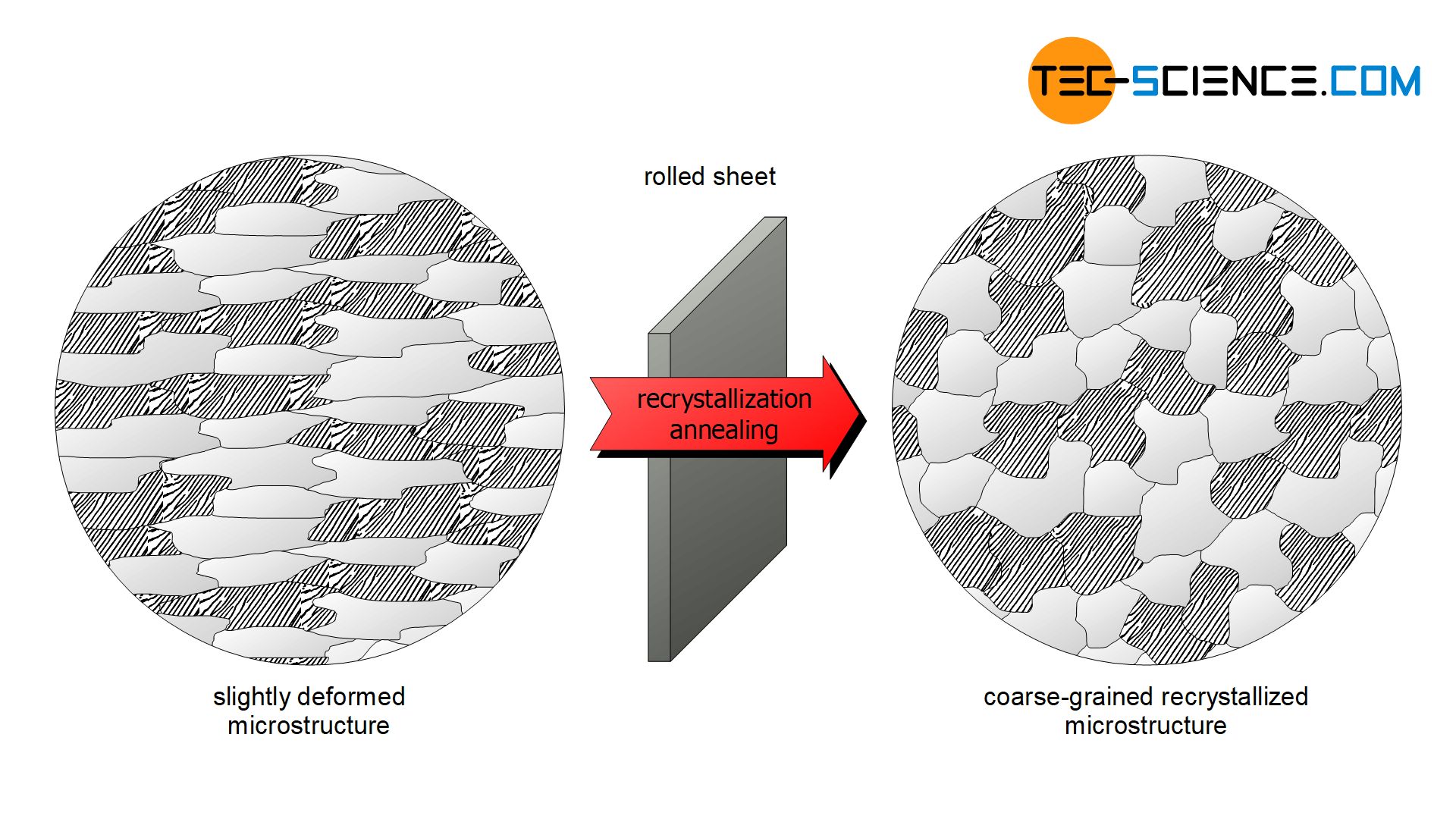
During recrystallisation annealing, the steel is annealed below the PSK-line in the range between 550 °C and 700 °C. Therefore, no lattice transformation takes place, as is the case with normalizing or partially also with soft annealing, although a recrystallisation effect also occurs with these two processes. During recrystallisation annealing, the grain boundaries can migrate through diffusion processes and the grains thus form anew. The deformed grains regain their original shape and the material regains its deformability.
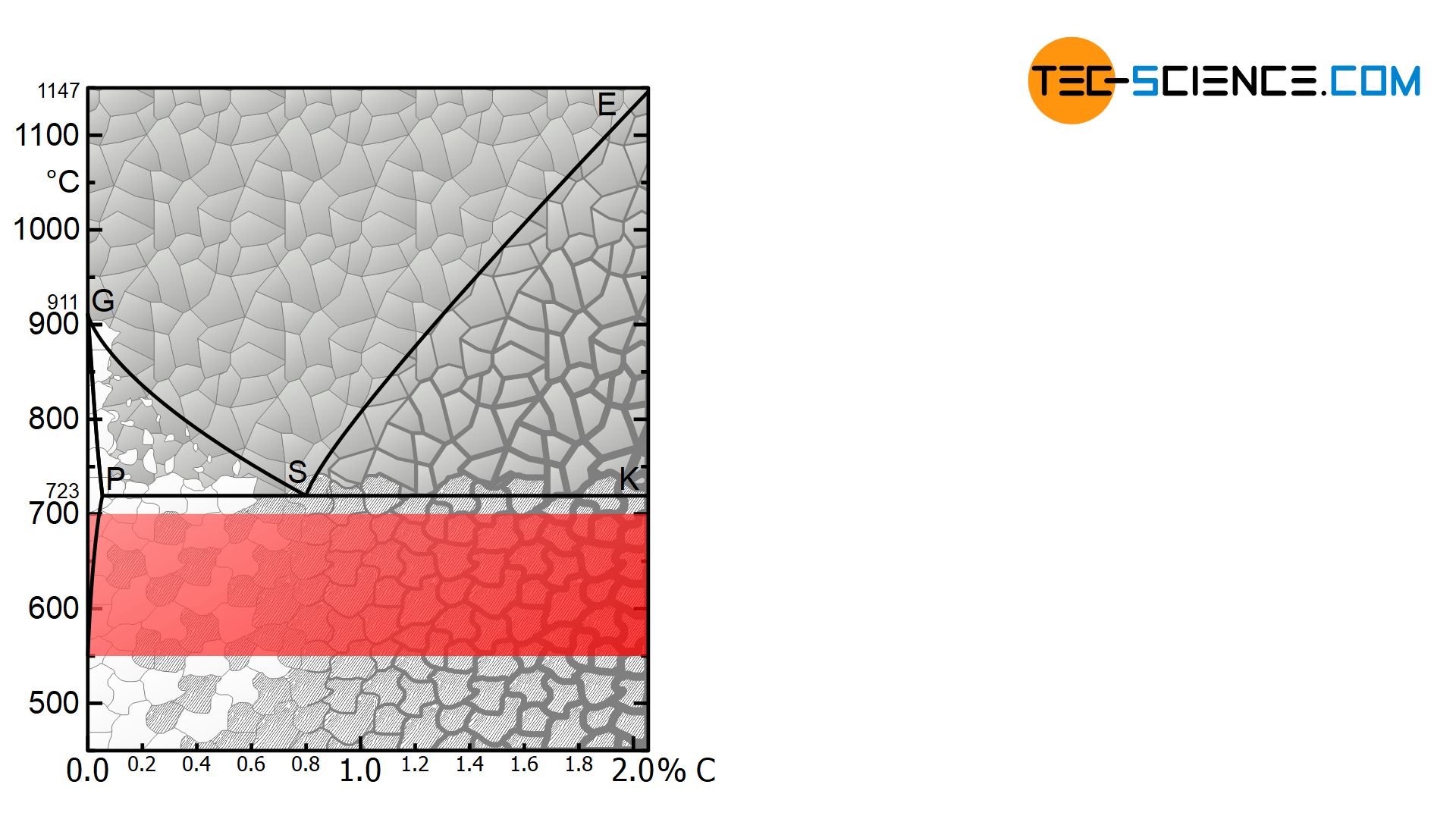
In addition to the annealing time and temperature, the size of the recrystallized grains depends in particular on how strongly the individual grains were deformed before. A high degree of deformation with very fine, elongated crystals allows the microstructure to recrystallize rather fine-grained. A lower degree of deformation leads accordingly to a coarser grain after recrystallisation. Especially for a slightly deformed microstructure, however, there is also the danger of coarse grain formation. This risk can occur particularly for low-carbon steels with carbon concentrations below 0.2 %, so that normalizing may be more suitable for the formation of new crystals.
Recrystallization annealing is the only method for transformation-free steels (where \(\gamma\)-\(\alpha\)-transformation is completely suppressed by alloying elements) to achieve grain refinement.
In order to always maintain the ductility of the material in multi-stage forming processes, the microstructure must be recrystallized between each forming step. This process is then also called intermediate annealing.
The effect of recrystallisation can also be used during the forming process itself by forming above the recrystallisation temperature. This is known as hot forming. However, if the material is formed below the recrystallisation temperature (e.g. at room temperature) it is called cold forming. Hot forming places much higher demands on the machines involved, so that economic efficiency must always be checked.
In hot forming, the workpiece is formed above the recrystallisation temperature, in cold forming, however, below the recrystallisation temperature!

